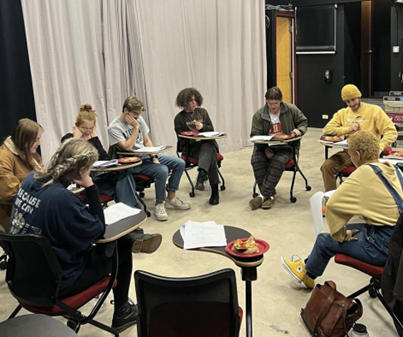 Photo by: Shockya.com
Photo by: Shockya.com
Ever since its origination, Charles Dickens’ “A Christmas Carol” has been a holiday treat, despite its constant retelling.
In the newest version of the Christmas classic, director Robert Zemeckis (“Forrest Gump”) depicts the story of old, grumpy Ebenezer Scrooge with a new, modern style. Zemeckis directs Disney’s “A Christmas Carol” using the same photo-realistic, motion-capture animation technique that he employed while making “A Polar Express” in 2004.
The result is an old story refreshed with dazzling effects and a film that is as fantastic as its original source text.From the mesmerizing opening scene, in which Zemeckis takes us on a rollercoaster ride through gilded Victorian-styled London without a cut, the realistic effects that potently steer the movie wow the audience.
Every scene is so masterfully shot that if feels as if one could reach out and touch the characters moving about on the screen.
Jim Carrey embodies the timeless grouch, Scrooge, as well as the arbitrations that haunt the man on the night of Christmas Eve.
While Carrey is busy lending his voice to many characters alive and dead, Gary Oldman is given the duties to voice Scrooge’s dutiful and cheerful assistant Bob.
Oldman also lends his voice to Scrooge’s long-time business partner Marley, who is the only non-Christmas apparition to visit Scrooge on Christmas Eve.
As the ghosts show Scrooge the past, present, and future of Christmas Day, the man begins to understand the interior motivations that shape what he is.
The journey unfolds with an array of visual flamboyance thanks to Zemeckis’ style of animation. At the heart of “A Christmas Carol”, however, is not outstanding visual effect.
The soul of the movie centers on Scrooge’s redemption for a better life.
By the time the Christmas apparitions leave Scrooge to correct his attitude and way of life,
Zemeckis has already begun his masterful conclusion.
Thanks to the help of the ghosts, Scrooge awakes from his dreamlike state determined to no longer be a man dislodged from the society that surrounds him.
Scrooge is forced by fear of death to revise his way of living, but in the end all that matters is that he chooses to be a better person, rather than remaining what he previously was.
The character change of Scrooge has been an essential part of “A Christmas Carol” since Charles Dickens spawned the story years and years ago.
Zemeckis is successful where many directors have failed before, he recreates a classic with a new style, but never relinquishes the lesson that the story teaches—we are all capable of achieveing a generous existence.










